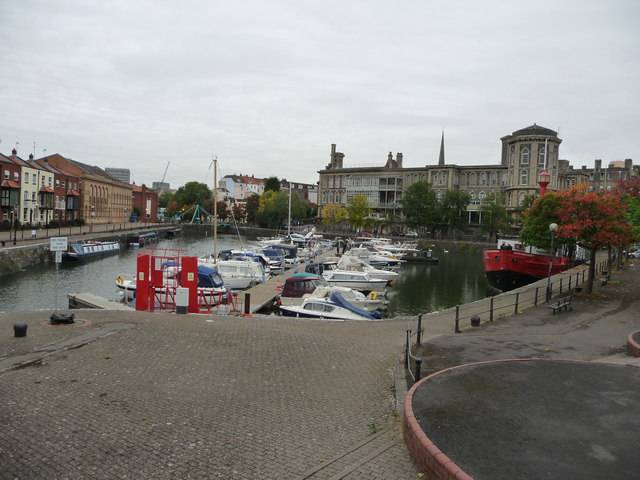

Bathurst Basin is a small triangular basin adjoining the main harbour of the city of Bristol, England. The basin gets its name from Charles Bathurst, who was an MP in Bristol in the early 19th century.
The basin was built on an area of an old mill pond, Trin Mills. The pond was supplied by the River Malago, from Bedminster to the South. It lost its water supply as the New Cut was created in 1809, running to the South of the enlarged Floating Harbour and catching the flow of the Malago. After this it formed a connecting basin, through two sets of locks, between the Floating Harbour and the tidal River Avon in the New Cut. The connection enabled smaller vessels to bypass the main entrance locks in Cumberland Basin. The area used to be an industrial dock with warehouses and numerous shipyards at the adjoining Wapping Shipyard and Docks, including Hilhouse, William Scott & Sons and William Patterson . Now there is a small marina, with residential quayside properties.
The Bristol Harbour Railway connected to the main line system at Temple Meads, via a swing bridge over the Northern entrance dock to the basin and a tunnel beneath St Mary Redcliffe. The tunnel still exists, but is now blocked, and the original railway swing bridge has been replaced with a swing footbridge. This bridge is manually swung by a hydraulic pump action.
Bristol General Hospital is located on the Eastern quay of the basin. When constructed in 1859, the hospital was built with basement warehouse space to defray its operating costs. The Southern quay has never had any substantial buildings on it and for many years was used by Holms Sand & Gravel Co. as a depot for building materials, brought in by boat and offloaded into road vehicles. A travelling crane on an overhead gantry was used to handle these.
The lock to the New Cut was blocked at the beginning of World War II to ensure that in case of damage by bombing, the waters of the Floating Harbour could not drain into the river. It was shut permanently in 1952.
The basin is the home for Cabot Cruising Club who own the lightship John Sebastian, which was commissioned in 1886. It was acquired by the club in 1954 and opened as its headquarters a few years later in 1959. Facilities at the basin include a toilet and shower block, a water tap and refuse and chemical toilet disposal points.
Also in the surroundings of the basin are the Ostrich and Louisiana pubs.
